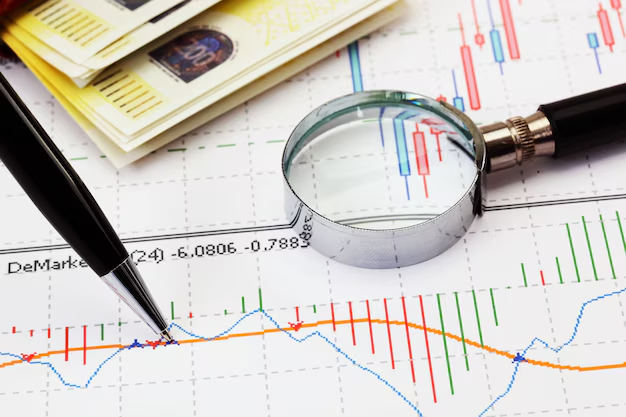Understanding Stock Dividends: A Comprehensive Guide
Investing in the stock market often involves a myriad of terms and strategies that can be complex for newcomers. Among these concepts, dividends play a crucial role in shaping investment decisions and potential returns. Whether you're a seasoned investor or just dipping your toes into the stock market, understanding dividends can enhance your investment approach.
📊 What Are Dividends?
Dividends are payments made by a corporation to its shareholders, usually derived from the company’s profits. They serve as a way to distribute earnings back to investors, providing them with a tangible return on their investment beyond potential stock price appreciation.
Types of Dividends
- Cash Dividends: The most common form, where shareholders receive a cash payout. These are often distributed quarterly.
- Stock Dividends: Instead of cash, shareholders receive additional shares of the company.
- Special Dividends: One-time payments that are typically larger than regular dividends, issued following extraordinary profits or events.
- Preferred Dividends: Paid on preferred shares and usually come with a fixed rate, taking precedence over common stock dividends.
💼 Why Do Companies Pay Dividends?
Paying dividends isn't obligatory for companies, yet many choose to do so for various strategic reasons:
- Attract and Retain Investors: Companies that consistently pay dividends tend to attract investors seeking steady income.
- Indicate Financial Health: Regular dividends can signal to the market that a company is in good financial standing.
- Improve Company Image: Dividends can enhance a company's reputation, signaling stability and shareholder regard.
📈 How Do Dividends Affect Stock Price?
The payment of dividends can impact stock prices in several ways:
- Ex-Dividend Date Adjustment: On the ex-dividend date, the stock price usually decreases by approximately the dividend amount, reflecting the payout.
- Market Perception: Consistent and increasing dividends can lead to positive investor sentiment, possibly increasing stock demand and price.
- Resource Allocation: While dividends are attractive, they might limit the resources available for reinvestment in business growth.
💰 How Are Dividends Paid?
Understanding the process of dividend distribution is essential for any investor:
Declaration Date: This is when the company’s board announces the dividend.
Ex-Dividend Date: Set by the stock exchanges, it's usually one business day before the record date, marking the cutoff for earning the declared dividend.
Record Date: On this date, the company reviews its records to determine the eligible shareholders.
Payment Date: The date on which dividend payments are issued to shareholders.
🔍 Key Metrics Related to Dividends
Investors often use specific metrics to evaluate dividend stocks:
Dividend Yield: This is the annual dividend payment expressed as a percentage of the stock price. A higher yield can indicate a good income source but may also signal potential risk.
Payout Ratio: This measures the proportion of earnings paid out as dividends. A lower payout ratio might suggest more room for dividend growth or capital reinvestment.
Example of Dividend Metrics
| Metric | Explanation |
|---|---|
| Dividend Yield | If a stock is priced at $100 with a $3 annual dividend, the yield is 3%. |
| Payout Ratio | A 40% payout ratio means the company uses 40% of its earnings for dividends. |
⚖️ Pros and Cons of Investing in Dividend Stocks
Like any investment, dividend stocks come with their own set of advantages and disadvantages.
Advantages
- Regular Income: Offers a steady cash flow to augment overall returns.
- Reinvestment Potential: Dividends can be reinvested to purchase more shares, compounding growth.
- Lower Volatility: Dividend stocks often exhibit less price volatility, appealing to risk-averse investors.
Disadvantages
- Reduced Reinvestment Potential: Dividends lessen funds available for company growth.
- Income Tax: Dividend income may be subjected to taxes, potentially reducing net gains.
- Market Timing: The market may not always reward timely purchases or sales based on dividends alone.
📚 Strategies for Investing in Dividend Stocks
If you're considering adding dividend stocks to your portfolio, here are some strategic approaches:
Dividend Growth Investing
Focus on companies with a history of increasing dividend payments. These stocks not only provide income but also potential for price growth.
High-Yield Dividend Investing
Seek stocks with above-average dividend yields. Ideal for immediate income, but be wary of potential risks associated with high yields and underlying company performance.
Dividend Reinvestment Plans (DRIPs)
Many companies and brokers offer DRIPs, allowing dividends to automatically purchase additional shares. This strategy can compound investment returns without additional capital.
🤔 Common Questions About Dividends
Are dividends guaranteed?
No, dividends are not guaranteed. Companies may reduce or eliminate dividends, especially if facing financial distress.
How do dividends impact taxes?
Dividends are typically taxed, with rates varying based on factors such as the investor's income and the dividend type. Knowing these rates can impact investment decisions.
Should all investors focus on dividends?
Dividends are more suited for income-oriented investors or those seeking portfolio stability. Growth-oriented investors might prioritize capital appreciation stocks instead.
📝 Summarizing Key Takeaways
- 💸 Dividends Provide Passive Income: Ideal for generating a steady cash flow.
- 📈 Evaluate Using Yield & Payout Ratio: Essential for informed dividend investment decisions.
- 🏢 Assess Company Stability: Consistent dividends often signal financial health but need careful evaluation.
- 💡 Reinvestment Grows Wealth: Consider reinvesting dividends for compounded returns.
Understanding dividends within the context of stock investment can empower your financial journey, helping you make choices aligned with both your asset growth targets and income needs. As every investor's situation is unique, reflecting on how dividends fit your overall strategy is crucial for long-term success.
